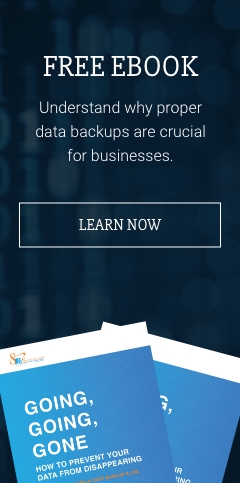Most businesses appreciate the gravity of modern technology in today’s business climate, but did you know 84% of companies fail at digital transformation? What this alarming statistic comes down to is the fact that many companies simply cannot successfully align their technology infrastructure with their corporate goals. Instead, they end up with technology being their enemy, rather than a mission-critical asset.
Why Small Businesses Often Fail at IT
According to PayScale, the average salary for a chief information officer stands at a hefty $152,000 per year – far beyond what the average small business can afford. In addition, even if your budget did allow for such a salary, it would likely end up being wasted anyway. For many small companies, a dedicated in-house IT department just isn’t necessary, but that doesn’t mean you don’t need access to the best technology.
One of the biggest challenges facing today’s businesses is that they don’t have the in-house expertise necessary to effectively align IT with their core operational goals. It’s simply too expensive, so they often end up running blind into the very specialized world of enterprise IT without knowing where to start. Unsurprisingly, this leads to poor investment choices and a near-complete lack of proper onboarding and training.
Without IT alignment, you’ll end up in a situation where you have technology working against you. Employees will waste time trying to work around and fix trivial computing problems that they’re not equipped to deal with. Rather than doing their jobs, they’ll be staring at error messages and loading screens instead of serving their customers. As a result, everyone, including the customer, suffers.
What Is a Virtual CIO?
When you’re running a small- or medium-sized business, hiring a full-time CIO could be overkill, regardless of whether or not you can afford it. Enter a different option – a virtual CIO (vCIO). A vCIO is a company that offers the full range of IT support and consulting services that a business needs to function optimally. In other words, it’s a portfolio of products and services ranging from cybersecurity to cloud computing and more.
Just like a dedicated in-house CIO, a vCIO is tasked with the responsibility of choosing, implementing, and maintaining the right technology for your company. You’ll have a contract with them, and they’ll have a vested interest in aligning technology with your corporate goals. After all, if they fail to do so, they’ll lose you as a customer.
Why Should SMBs Hire a vCIO?
Some IT providers are all about selling and then disappearing, but that’s changing quickly as businesses start to realize the fact that enterprise technology is constantly evolving and changing. That’s why it’s all about establishing a long-term relationship with a technology partner you can trust. The first thing an IT service provider should do is analyze your current situation before developing a technology roadmap for your specific requirements.
It’s the dynamic nature of IT -- as well as all the evolving challenges that come with it -- that requires a long-term approach. A vCIO will develop a long-term strategy that includes security and disaster-recovery planning, IT maintenance, management and monitoring, and 24/7 availability. In other words, they’re there when you need them, but you only pay for the resources and expertise you actually need.
Another way to look at it is to consider your vCIO an outsourced technology department tasked with developing a long-term IT strategy and onboarding your staff with new technology. Best of all, you save an enormous amount of money since you’ll be paying only for what you need, either on demand or by the hour depending on your preferences.
Whether you have a small IT department of your own or you completely lack the in-house expertise necessary to align IT with your goals, Safebit Solutions exists to help your business get more out of technology. Talk to us today to get started.


